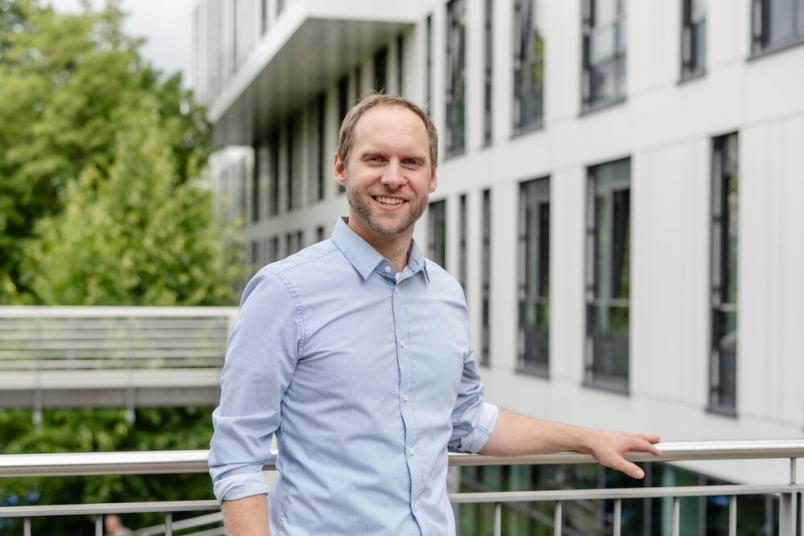ERC Grant
Understanding particle interactions in neutron stars
Neutron stars may be much heavier than predicted by theory. This is possibly due to hyperons, i.e. poorly understood elementary particles. John Bulava aims at reconciling theory and experiment with new simulations.
Neutron stars are among the densest objects in the universe. The processes taking place inside them are a mystery to particle physics. Observation and theory don’t match. This could be due to a lack of understanding of so-called hyperons – particles that contain a unique component, namely the strange quark. They are unstable and therefore difficult to study. Professor John Bulava from Ruhr University Bochum, Germany, is using computer simulations to get to the bottom of this problem. The European Research Council ERC is funding his work as part of a Consolidator Grant with almost 2 million euros for five years. The project “Strange Nuclear Matter from First-Principles Hadron Scattering Amplitudes” (StrangeScatt) is due to start in June 2024.
Particle physics models can be used to predict how heavy neutron stars can become and what radius they have. “These models predict that it’s impossible for very heavy neutron stars to occur,” explains John Bulava, who holds the Professorship of Theoretical Hadron Physics in Bochum. “However, neutron stars have already been detected that are twice as heavy as our sun – these observations don’t fit the models.”
Simulating hyperon interactions
These discrepancies are possibly due to hyperons, i.e. particles with a strange quark that are created inside neutron stars. “The interactions of hyperons are not sufficiently understood,” says Bulava. Everyday matter, such as we experience in everyday life, consists of protons and neutrons, which in turn consist of smaller particles, namely quarks. There are six types of quarks; two of them – up and down quarks – are found in classical matter. “When strange quarks are involved, as with hyperons, all sorts of new phenomena can occur,” says John Bulava and is convinced: “If we understand hyperon interactions better, we’d be able to better predict the mass and radius of neutron stars.” This is exactly where his research comes in.
Enormous computing power required
As hyperons decay very quickly, they are difficult to study in experiments. Computer simulations eliminate this hurdle. Bulava describes the particles using first-principles simulations. In the model, he simulates the fundamental forces that act between particles. Such simulations are extremely complex and require enormous computing power, which only high-performance computers can provide. “Germany is an excellent European location for this kind of research, because several supercomputers are located here,” says the US-born scientist.”
Due to the great effort this involves, only the interactions of two or three particles can be computed with first-principles simulations. Still, John Bulava plans to dovetail his work at Ruhr University Bochum with that of other groups from the fields of theoretical physics, plasma research and astrophysics. “Neutron stars are a fantastic astrophysical laboratory, and at Ruhr University Bochum we have the opportunity to approach it from different perspectives,” he says.

